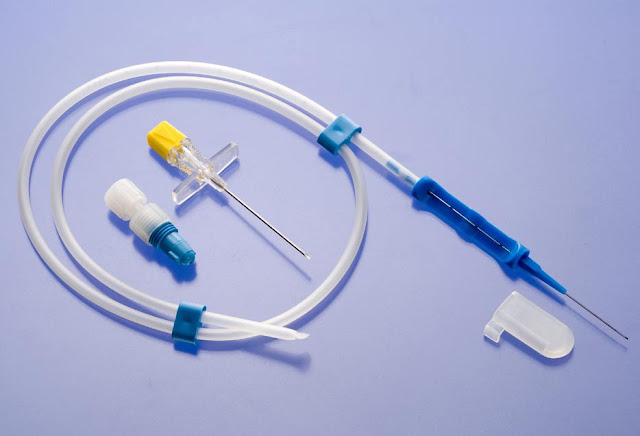Micro Guide Catheters
are small but mighty tools that have revolutionized the field of minimally
invasive medical procedures. These catheters are designed to navigate intricate
blood vessels, aiding physicians in delivering precise treatments to targeted areas
within the body. Let's delve into the world of catheters, exploring their
purpose, versatility, sizes, and main types.
Major Key players
operating the Micro
Guide Catheters Market include Cardinal Health, Asahi Intec Co., Ltd,
Cook Medical, Boston Scientific Corporation, Penumbra, Inc., Merit Medical
Systems, Inc., Terumo Europe NV, Medtronic Plc, Integer Holdings Corporation, Philips N.V.
What
is a Micro Guide Catheter?
A micro guide catheter
is a thin, flexible tube made of biocompatible materials, such as polymers or
metals, with an outer diameter ranging from 1 to 3 French (Fr). It is
specifically designed to access challenging anatomical structures, such as
small tortuous blood vessels, allowing physicians to perform a range of
procedures with enhanced precision.
Uses
of Micro Guide Catheters:
Micro guide catheters
find extensive use in various medical procedures, including angiography,
angioplasty, embolization, and complex endovascular interventions. These
catheters serve as a conduit for other medical devices, such as guidewires,
stents, or embolic agents, providing a pathway for their deployment to target
locations. By reaching otherwise inaccessible areas, micro guide catheters
enable physicians to treat conditions like arterial blockages, aneurysms, or
vascular malformations with greater efficacy.
Size
Matters:
Micro guide catheters
are available in different sizes, typically ranging from 1 Fr to 3 Fr. The
choice of size depends on the specific medical procedure and the vessel size
being navigated. Smaller catheters, such as 1 Fr, offer enhanced flexibility,
while larger ones provide additional support and stability. The appropriate
size selection ensures optimal navigation and successful treatment outcomes. The global Cerebral
Angiography Market has witnessed significant growth, with a value
of US$ 14.96 billion in 2023.
It is projected to expand at a CAGR
of 6.1% from 2023 to 2030, reaching
US$ 22.64 billion.
Main Types of Micro Guide
Catheters:
1. Over-the-Wire
(OTW) Catheters: These catheters have a hollow lumen that allows the passage of
a guidewire, providing enhanced stability and maneuverability during the
procedure. They are commonly used for a variety of vascular interventions.
2. Rapid
Exchange (RX) Catheters: These catheters have a shorter guidewire lumen,
facilitating quicker exchange of devices while maintaining stability. They are
particularly useful in situations requiring frequent device exchanges or in tortuous
vessels.
3. Flow-Directed
Catheters: These catheters have a distal side-hole or multiple side-holes,
enabling physicians to selectively deliver fluids or embolic agents to specific
vessels or areas. They are commonly used in embolization procedures for the precise
delivery of therapeutic agents.
In conclusion, micro
guide catheters are a remarkable advancement in the field of minimally invasive
medical procedures. With their small size, they enable physicians to navigate
complex blood vessels with precision, opening new doors for targeted
treatments. Understanding their purpose, versatility, sizes, and main types can
help both healthcare professionals and patients appreciate the remarkable
impact of these tiny, yet indispensable, medical devices.

